|
Pebbles! |
Marcy Petrini
October, 2025
A few years back Susan Foulkes used a pebble weave for one of her projects published in Handwoven. In skimming through the article, I vaguely remembered the pebble weave, and I decided it should be something to look up and study. I put “Pebble” on my to-do list.
Eventually I arrived at the “pebble” entry on the list, and I looked up pebble twill in Davison’s A Handweaver’s Pattern Book. She has three treadlings shown in the drawdown below.
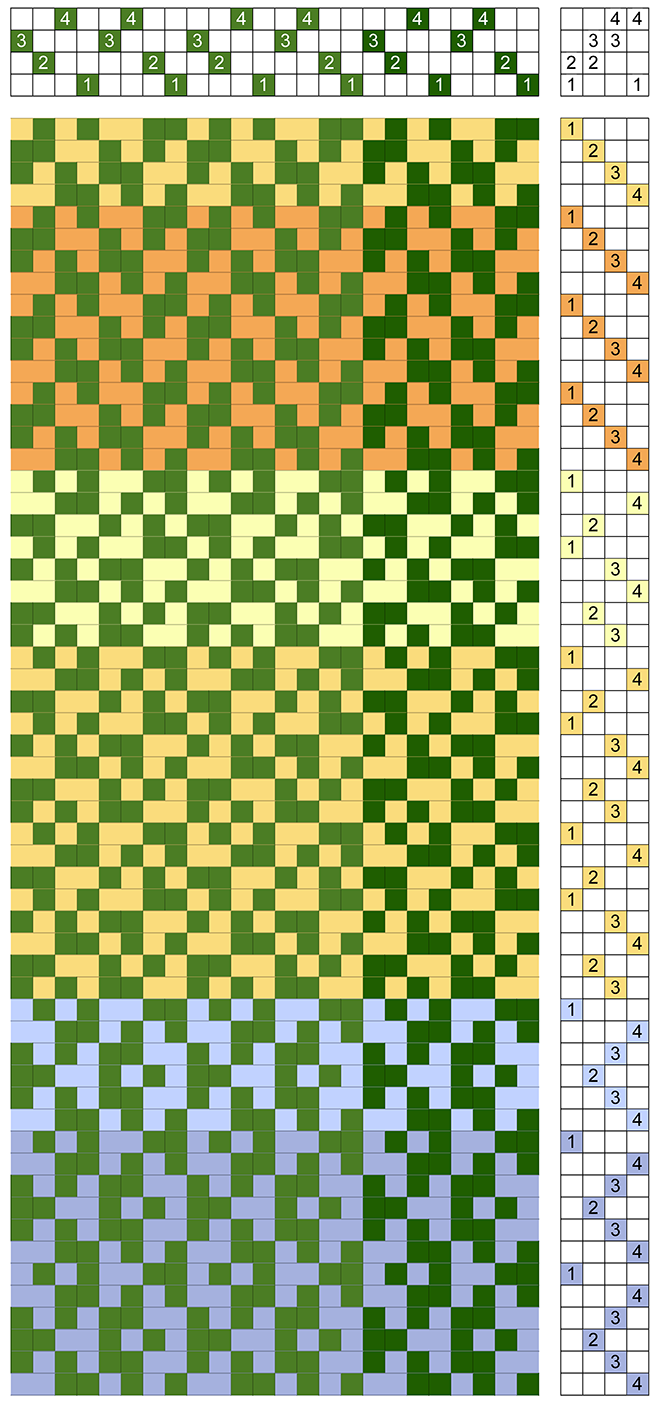
In the drawdown, the first repeat of the threading and the first repeat of each treadling are shown in a different shade to clarify them.
The pebble twill has a very clever broken twill threading; each repeat is eight threads. For the first four, we take the straight twill threading and break it by switching 3 and 4 and obtain: 1, 2, 4, 3, a common way to break a twill. For the second four threads, we take the straight twill threading and move shaft 4 before 2, 3 which results in: 1, 4, 2, 3, not as common, but another way to break a twill.
Below is fabric sample for the first treadling. A single repeat in the sample is marked by a square to highlight it, since it is really hard to detect it.
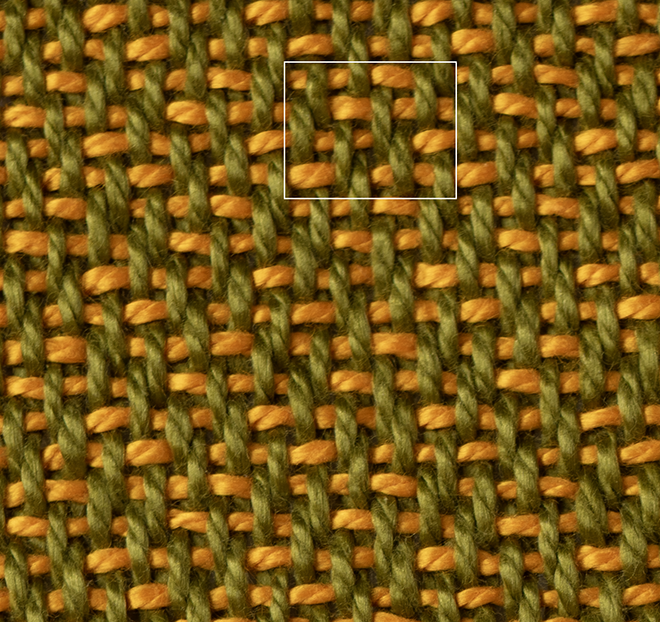
This is what I like about this twill: the repeat cannot be determined easily because the seemingly randomness causes the eye to jump around and the light to reflect in different directions. This is more effective and more interesting than the usual broken twill (see the Pictionary entry for Broken Twill.).
Below are the other two treadlings that are found in Davison’s book, also shown in the drawdown.
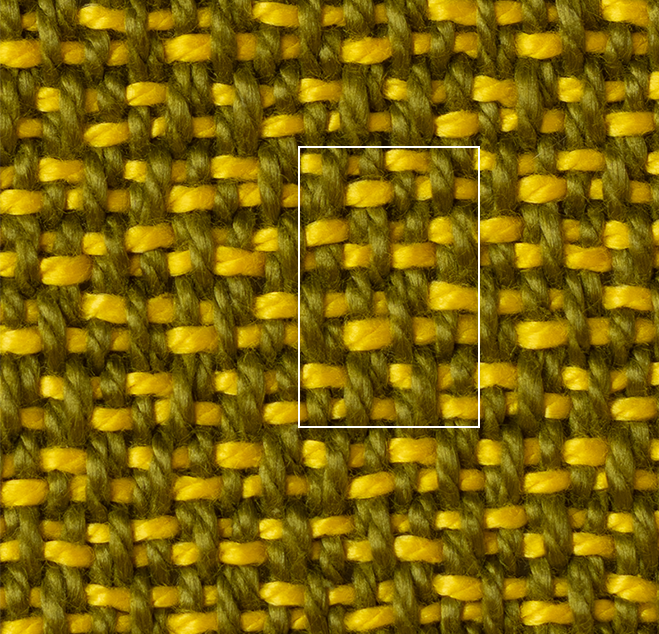
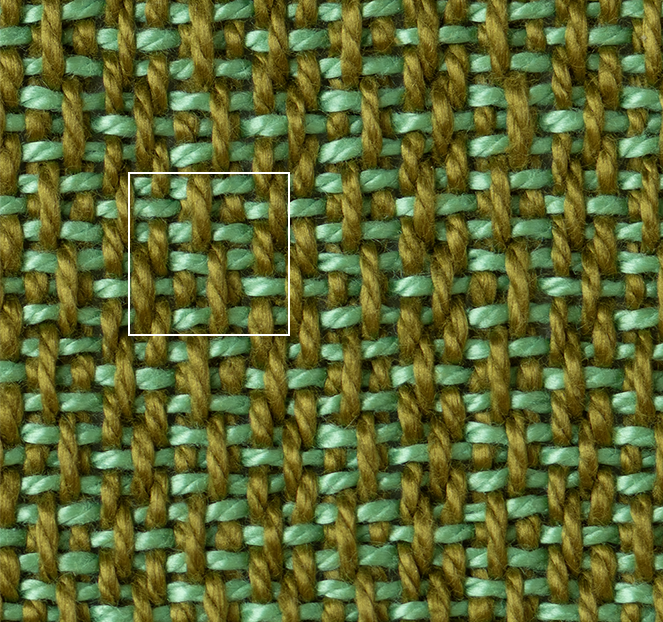
Interesting variations but not as easy to weave unless we re-tie the treadles.
At some point, I realized that Susan Foulkes had called her pattern “pebble weave”, but I just thought they were two names for the same structure as often happens in weaving.
However, this is not the case. The pebble weave is, indeed, a twill by Emery classification, but not the same twill as the “pebble twill.” We usually don’t refer to a single twill as a weave, but it’s not unusual and in this case it may help differentiate between the two.
Below is the drawdown of the pebble weave. It is a straight threading with a treadling that uses the plain weave picks and two of the traditional picks from the straight draw: 1 & 2 and 1 & 4. This combination also results in a broken twill.
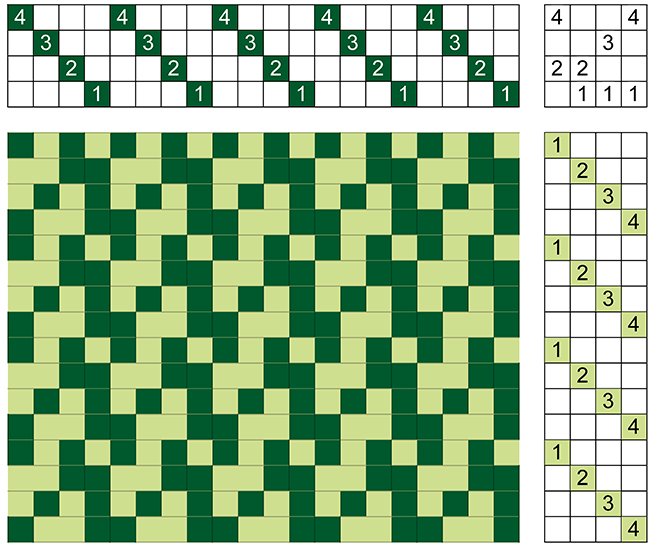
Below is the fabric sample, with the square highlighting one repeat of the twill. Davison has another treadling for the pebble weave, similar to the crepe weave (also a twill), using pairs of opposite treadles in the tie-up (See the Crepe Weave Pictionary entry).
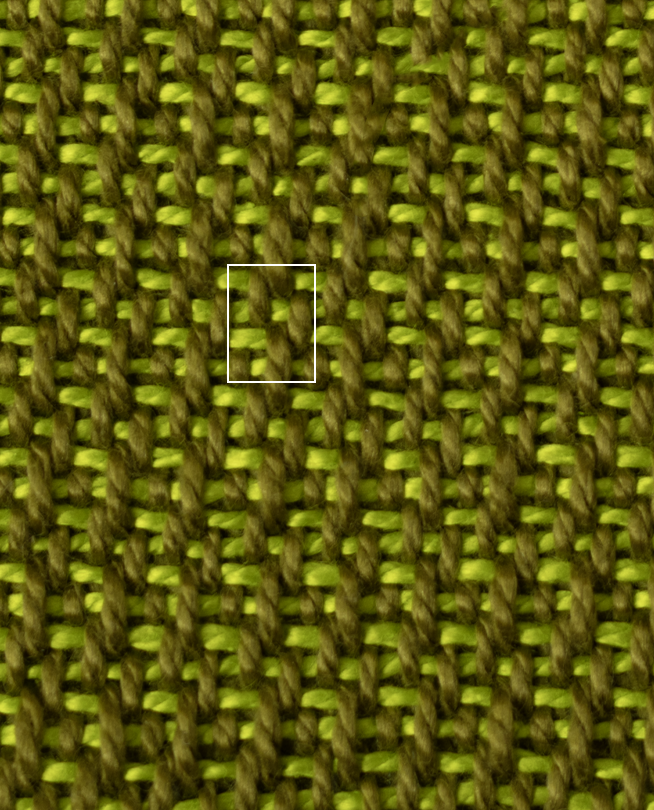
The dots that appear in the fabrics may be giving the two twills their pebble names, more obvious in the drawdown than the fabric, and actually, more obvious in the pebble weave than in the pebble twill.
Lots of ways to break a twill and make a fabric with good drape but not an obvious motif.
Happy weaving!
Marcy
